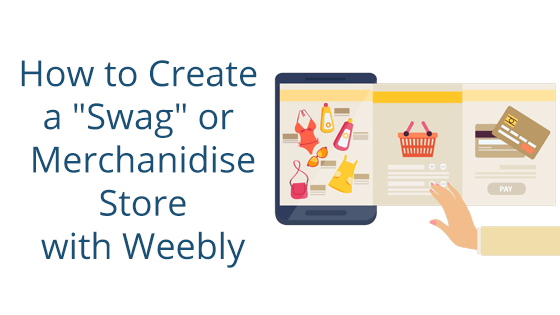The Importance of the Site Refresh
Refreshing your site with a new design is necessary every once in a while. If you don’t update, the fast-paced world of technology will leave your site looking outdated in a few years. To stay relevant, it’s necessary to fine-tune your site’s design periodically. The general rule of thumb is to redesign every few years, but there are a lot of signals that could be indicating you need a site refresh sooner rather than later.
We go into more detail about the site refresh in this article: How Often Should You Refresh Your Site’s Look and Feel?
How Web Design Has Changed Over the Years
Here’s a brief timeline of the changes that have affected web design over the years.
1995
In 1195, Javascript exploded onto the scene. With it came the ability to automate web design, which allowed visitors to interact with a web page without loading a new one.
1996
Adobe Flash was introduced. It allowed for video, audio, and animation integration into websites.
Around 2005
Websites began to find their rhythm. Top navigation and left sidebars became a standard that would last for many years to come. General opinion began to frown on text-heavy pages.
2007
The first iPhone launched, starting web design down the path toward mobile-friendly design. However, it would be a while before this was widely implemented.
2010
With mobile users growing (thanks to smartphone popularity), web designers started using responsive design to automatically resize web pages to fit different device sizes.
Around 2014
Around this time, responsive and mobile-friendly designs took off. Columns and graphic-centric design also came into vogue.
Around 2017
Minimalist design came into popularity around this time, partly due to the needs that responsive design places on a site.
What’s the Rage in Web Design in 2020
Now that we’ve covered the past, are you curious about what’s in style this year? Well, we compiled a list of some of the trends going on in web design in 2020.
Scalable Vectors Graphics
In 2020, there’s been an uptick in websites that are using Scalable Vector Graphics, or SVGs. SVGs are XML-based files that leave a small file footprint but work enormously well on today’s responsive websites.
Because responsive websites need to scale to fit different device types, it’s a boon to have graphics that can scale with it. While this scaling can cause pixelation and slowness with .JPEG and .PNG files, SVG files are easily scaled, without compromising on quality or speed.
Hand-Drawn Graphics
Over the last few years, many realized that businesses need to be online. So more businesses than ever before were investing in websites. Due to increased demand, many website designers created professional templates and themes for businesses.
However, after a while, many of these business websites began to look similar. So, by 2020, businesses started to look for ways to shed the cookie-cutter professional vibe. Hand-drawn graphics are one way businesses are giving their websites character.
Hand-drawn graphics aren’t perfect – in fact, they often defy the typical, clean graphics that professional websites gravitate towards. However, by doing this, they give the website a bit of personality, making the business feel more personable and approachable. In a world of cookie-cutter perfection, a little imperfection can go a long way to set you apart.
Asymmetrical Design
Another way businesses are differentiating themselves is through asymmetrical web design. For a while, symmetrical design was something to strive for. However, design-conscious businesses have uncovered that an asymmetrical design can not only spruce up a site, but it can also help direct the visitor through the site.
Because the site isn’t balanced, some things stick out more than others. If played right, you can use these “protruding” design elements to lead someone through the page. A visitor’s eye is naturally drawn to the thing that stands out the most. In a balanced design, there might be several elements warring for their attention, but in an asymmetrical layout, the visitor can be drawn down the page, from one element to another.
Knowing this, you can plan out your pages to put the visitor directly where you want them.
Graphics and Photos Together
In 2020, using graphics and photos together became a trend. This may seem strange to you, especially if you subscribe to a rigidly professional aesthetic. However, there’s a reason for this. While graphics and photos may seem like an unlikely pair, businesses have found that pairing them has several benefits.
Firstly, it helps them maintain brand identity. While photos – especially if they’re stock photos – don’t always embody your business’ persona, adding graphics can add more character.
It’s a little like hand-drawn graphics (though being hand-drawn isn’t a requirement). By adding graphics, you give the page a little more flavor and can help enhance your brand when photos alone are not enough. They don’t need to be “fun” graphics, either. If your business has a sterner voice, you can opt for geometric graphics. This gives you the benefits of perking up your site without compromising your brand identity.
Likewise, complex subjects are a great place to mix your photos and graphics. If your business deals with confusing information, you can harness graphics and photos into an explanatory power duo. When a photo doesn’t necessarily explain everything, adding a graphic could give it additional depth.
Data-Driven Design
Does your company deal with data? Do you have access to compelling data about your business’ field? 2020 is the year to use it!
Highlighting statistics in design is being used by more businesses in 2020. If done right, not only is it compelling information, it can also give visitors and idea what your business is about.
Data-driven design revolves around the data you want to share. Let’s say your company’s support team has an average approval rating of 4.7 stars. Tout that to your site visitors. They’ll see that you not only have a stellar support team, they’ll also realize that you know the value of your support.
While you may have told them about your stellar support before, giving them numbers really hits the point home. Plus, if someone is interested in the numbers, they will stay on the page longer to read the data you’ve listed. The longer they stay on the page, the better for your SEO.
Keep in mind that data-driven design isn’t a page full of overwhelming numbers. Instead, the data should be presented in an aesthetically pleasing way. That way, it will draw the eye and make people want to read it.
Dark Designs
Dark designs are very popular this year. It’s not just because they’re sleek, but because of a growing trend in electronics in general. Many platforms, not just websites, are moving toward dark designs. Popular social media sites, like Facebook and Reddit, have implemented dark modes. Phone interfaces have added them. Apps have embraced it, too.
So it’s natural that websites would also start moving toward dark themes. Not only is it in vogue, but dark themes are also supposed to be better for battery life. They also cause less eye strain and the contrast makes it easier to read.
Accessibility
The last trend in 2020 we’ll talk about is accessibility. Accessibility has been up-and-coming for a long time. In truth, it’s never really gone out of style.
For those not familiar, “accessibility” refers to making your site accessible to those who can’t interact with it visually. They may be using screen readers to help them surf the internet. If your site isn’t set up properly, the screen reader will have a hard time, which in turn makes it difficult for them to interact with your site.
Google and other search engines know this is a problem, so they calculated accessibility into their SEO ranking methods. So if you want good SEO, you should take the time to make your site accessible.
There’s a lot that goes into accessibility, from adding alt text to images to making sure your code is accessible. You can read more about accessibility here: Web Accessibility Initiative.
What Does This Mean for You?
Do you feel your site might be out of date? Then it might be worth implementing some of these new design elements into your refresh. While it’s true that some design elements can fall out of vogue, implementing some new design concepts can give your site new life.
Not sure if your site needs a refresh? Check out our blog: How Often Should You Refresh Your Site’s Look and Feel?. It will explain warning signs that indicate a site needs a redesign.




